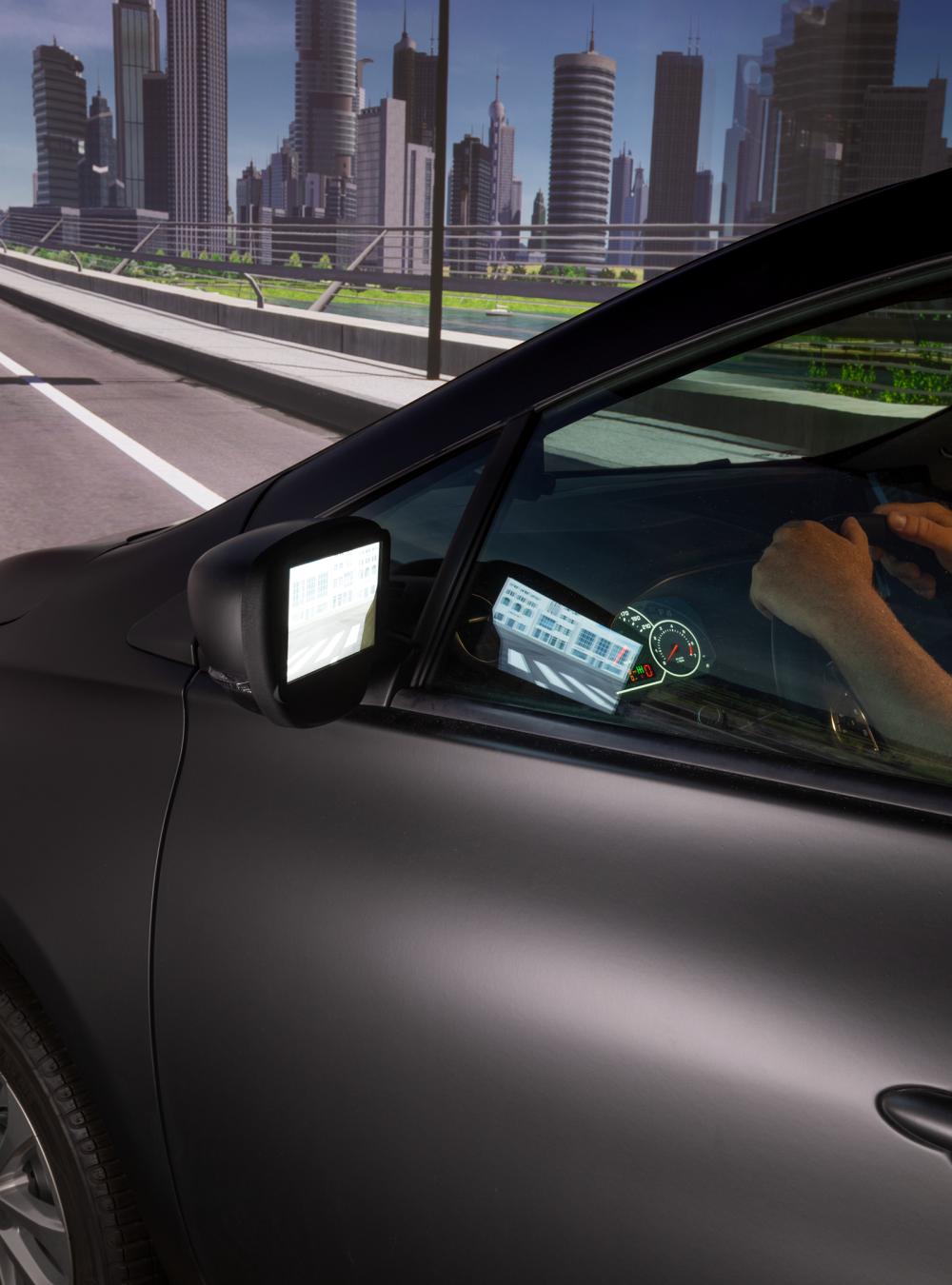MITRE's new DRIVE Lab can simulate, analyze, and explore how transportation systems like cars, micromobility, and public transit work together. By combining real vehicles, state-of-the-art sensors, human-in-the-loop testing, and realistic simulation design, we can shape a safer future for surface transportation.

New DRIVE Lab to Map Route Toward Safer Surface Transportation
MITRE’s new Driver Research for Intelligent Vehicles and Environments (DRIVE) Lab has parking for one—yet offers the potential of safer transportation for millions.
At first glance, the nimble looking, matte black car parked in front of a huge, wrap-around screen may look like a video game. But the lab’s intent is deadly serious: to facilitate research at the complex intersection of people, how they move around, and increasingly intelligent vehicles.
The lab’s overall focus will be to create a safer surface transportation environment.
“This is part of MITRE’s effort to take the impactful work we’ve done to modernize and improve the safety of the aviation system over the years and begin to apply that success to other forms of transportation,” says Beth Meinert, senior vice president and general manager, MITRE Public Sector.
Creating an Immersive Research Environment
“We all have cars with different types of technologies and different implementations of technologies,” says Paul MacWilliams, the DRIVE Lab’s manager. “As the levels of autonomy and advanced driver assistance systems grow in our vehicles, it’s important for drivers to understand what those systems do and how they’re going to perform.”
A highly customizable virtual environment, the lab is designed to simulate any type of vehicle and its driving capabilities—from conventional passenger cars with limited automation or assistance systems, to highly autonomous ones. It can generate virtual test environments such as urban cities or highway networks. Eventually, the lab will be able to simulate interactions between various types of surface transportation, including those between vehicles and more vulnerable road users such as pedestrians, cyclists, or those using forms of micromobility such as e-scooters.
This is part of MITRE’s effort to take the impactful work we’ve done to modernize and improve the safety of the aviation system over the years and begin to apply that success to other forms of transportation.
Researchers will be able to collect data about how vehicles interact with other vehicles, how human-driven vehicles interact with the environment, ways that humans interact with their vehicle and other vehicles, and more.
“We’re looking at how various vehicles can be integrated into the traffic system to improve safety in intelligent transportation systems,” says Joe Kolly, MITRE's Integrated Systems Innovation Center director. “We want to shed light on the interoperability of connected and automated vehicles and some of the technical challenges associated with the deployment of those vehicles.”
Making Connections in a New Way
The DRIVE Lab enables cooperative and interactive simulations by integrating with existing facilities such as MITRE’s Mobile Autonomous Systems Experimentation (MASE) and Integration Demonstration and Experimentation for Aeronautics (IDEA) labs. It will also integrate with real vehicles and infrastructure, as well as simulators at external institutions. These connections enable research in multi-domain and multi-mission simulation environments.
“We're ready to introduce this lab as part of our intelligent transportation simulation ecosystem where we can start to do interactive work,” Kolly says.
MITRE is addressing a critical gap in this area of research while fulfilling our role as connector at the intersection of government, public, and private sectors. Acting as facilitator and participant, our teams can use the DRIVE Lab to leverage research data and capabilities from industry and beyond. In applying this work to various government agencies’ challenges, we can shed light on complex questions that may help accelerate adoption of, and create standards for, a safer surface transportation ecosystem.
The lab also offers researchers a venue that’s hard to replicate in the real world. “It takes millions of miles to sufficiently test vehicle automation,” MacWilliams explains. “The DRIVE Lab offers a simulated environment for evaluating technology and the human experience safely and efficiently in an increasingly autonomous vehicle ecosystem.”
“MITRE has a big role to play in how we connect the sensors, instrumentation, and environments to improve the user experience and make our systems more efficient, sustainable, and productive,” says Charles Clancy, senior vice president, general manager, MITRE Labs, and chief futurist. "Research done in this lab will help inform decision makers and stakeholders about integrating fully autonomous systems into the existing transportation system.
“This is precisely the kind of research challenge we’re tailored to collaborate and convene with others on to solve problems that result in a safer world.”
Join our community of innovators, learners, knowledge-sharers, and risk takers. View our Job Openings.